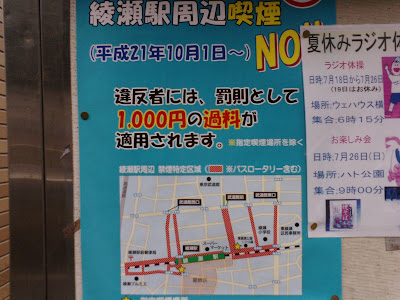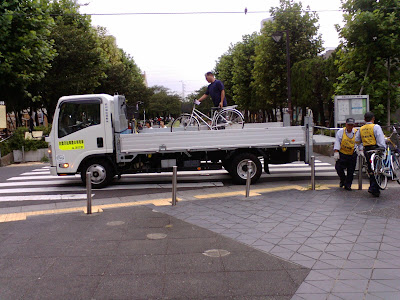Inspired by the news the other day that a Kyoto district court has rules that housing rental contract renewal fees are a violation of consumer rights, I thought I would write a brief introduction to how renting works, based primarily on my own experiences.
I have rented twice in America, three times in Japan, and one time in Taiwan, with an asterisk. As this post was getting quite long, I’ve decided to split it up into three pieces. Since I want to go in chronological order, I’ll first discuss America with a brief mention of Taiwan, then part 2 will discuss how it works in Japan, and finally in the third part I will break down my actual housing contract as specific examples.
I went to college at Rutgers, the State University of New Jersey, in the small city of New Brunswick. After two years in various dorms I decided to move out, and went looking for a house or apartment to share with a friend or three. The Rutgers campus is surrounded by a zone of houses (with a very few apartment buildings) which are occupied almost entirely by students renting from year to year, formed as if the city were insulating itself from the campus in much the manner of an oyster generating a pearl to protect its soft, fragile body from a piece of grit. Since houses in the area are almost entirely for students, landlords can advertise directly to them quite easily through the housing office bulletin board etc, so there is no need for anyone to involve real estate agents. In most cases, the owner of the house rents directly to students, and are usually very amateurish about arranging repairs etc. The security deposit is equal to 1.5 months rent, as specified by city ordnance, and must be kept in a special bank account which may be used only to store the security deposit. When first moving in, the only thing you pay are first month rent, last month rent, and the security deposit. There is no “renewal fee” or anything similar, and in ordinary circumstances, most of the security deposit is returned.
This is pretty much the procedure throughout the US. While houses may be rented directly by the owner or through a real estate agent (who I presume earns some sort of fee), one often has contact with the landlord (i.e. the actual owner) after moving in, but owners of multiple properties may hire a company to deal with residents for them. Large apartment buildings generally have a superintendent who manages building, particularly construction, although I am somewhat vague about how small apartment buildings generally work. Security deposit is usually legally restricted to an amount of 1.5 or 2 months rent, and contract renewal fees are illegal. There is one big exception in the case of ‘key money’, which I will discuss later.
I should also add that exclusion by race or nationality is highly illegal, to the point where realtors are legally prohibited from even discussing the racial makeup of the neighborhood, should the renter be trying to, for example, avoid living near black people. This is very strictly enforced (at least in some states.) My mother had a good friend who worked as a realtor, who told me that the New Jersey state board of real estate (or whatever the official name is) actually sends undercover inspectors to do random checks of real estate agents and make sure they are following the discrimination guidelines. Realtors who break the rules lose their license.
I lived in one such house for a year (actually the first story of a two family house, as many houses are in the area), went to Japan for two years, where I lived in school dorms, and then returned for my final year at Rutgers, where I shared a second-story apartment of a different two-family house, which had been arranged while I was away by the girlfriend of a good friend (the girl being Jess Rees and the friend being Brian Cervino, both members of the band Huma whose music I recommend), and another guy that she knew. I’m afraid I forget now exactly what the rent was, but it came out to somewhere between $300 and $400 per person, plus some more for utilities. The security deposit in New Brunswick is set by law at 1.5 months, and in both cases most of it was returned, although well after the 30 day window required by law. As a student with no independent source of income, the landlords also required parents to co-sign as a guarantee. This is common in the US in such situations, but is not usual for renters who actually have a stable job. In both cases, everyone living in the apartment signed the lease, but the room and rent allocation was not explicitly spelled out, which in retrospect might have been a good idea, as there were some minor arguments in that area in the first house (although none at all in the second.)
I next went to study in Taiwan for a few months, where had arranged no housing in advance aside from a one-week reservation in a youth hostel, but almost immediately found a promising room advertised on a bulletin board at school. This experience gets an asterisk because as a subleter I never signed, or even examined, a contract and know relatively little about the local procedures and laws. My general impression, however, is that it works more or less the same as in most of the US, with no ‘key money’ or renewal fees, and only moderate security deposits. It seemed to me that rentals often go through agents (at least in apartment building-dominated Taipei) but perhaps in smaller cities/towns there are more landlords renting directly.
Stay tuned for part 2 tomorrow.







